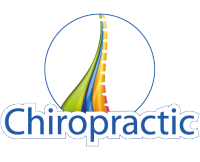Frequently Asked Questions
What do Chiropractors do?
Chiropractors relieve pain, restore spinal joint movement and change muscle patterns with gentle specific manipulations called “adjustments”. These joints include shoulders, knees, elbows, feet, hips and the spine. On-going treatment may include exercise and lifestyle advice, which is individually tailored to each case.Are all Chiropractors the same?
No. Both Chiropractors at Alderley Chiropractic are biomechanical based practitioners and use both ‘Diversified’ and ‘Gonstead’ methods of adjusting. Both also incorporate soft tissue technique in their treatment with a focus on active muscle release technique. Both practitioners are from sporting backgrounds and have a great understanding of human body movement.Are Chiropractic adjustments safe?
Yes. Full scientific reviews of the literature (Cochrane Review) have reported that spinal manipulation is one of the safest approaches for spine pain compared with many different medical approaches.Do Chiropractors only treat people with back pain?
Chiropractors treat problems of the spine and nervous system. Whilst 9 out of 10 of our patients see us for neck pain, back pain or tension headaches, lots of patients report they can better manage a range of other health conditions when their spine and muscle system is relaxed and working well. This includes breathing better, increased flexibility, less fatigue, decreases in tingling and better sleeping habits.How much treatment will I need?
The number of treatments needed for each person depends on such things as
• injury severity
• length of time you have had the injury
• level of degeneration or bony damage in the spine
• extent or spread of nerve and muscle damage
• is it one, two or more levels of damage?
• general fitness and age of patient
• whether you smoke or are overweight
• your body’s healing rate and sensitivity to any type of treatment (some people can tolerate a lot more being done during one visit)
A very general guide for people looking for some level of pain relief is about 6-12 visits over a month. If there is absolutely no change to a person’s level of pain or activity after a month and 12 visits, a re-assessment or a second opinion is needed.
Progress exams should be made to make sure that improvement is occurring and that a person understands their problem. Some patients are pleased with pain relief and cease further treatment at this point. Certain spinal problems need ongoing management to help a person keep operating at their best. Many patients prefer to keep functioning at the optimum and plan regular visits at two, three or four weekly intervals to maintain full function.
Is there an age limit for treatment by Chiropractors? Is it for everyone?
Chiropractors are trained over 5 years at University to treat patients of all ages. Examples of some of the conditions Chiropractors can treat are below.
Babies for hip dysfunction
Teenagers for poor posture, scoliosis or sporting injuries
20-40 year olds with disc or whiplash injuries
40-50 year olds with stiffness or troublesome knees walking down stairs
60-70 year olds to keep flexible and increase their balance and coordination
The spine undergoes wear and tear or degeneration where it doesn’t move well. Chiropractors are trained to get those areas flexible again and decrease the wear and tear.
Chinese proverb: “You are as young as your spine is flexible”.If I have a chronic problem, will treatment be effective?
Chronic problems are always harder to treat than acute conditions. In saying that, a lot of people that have tried lots of treatment before without much benefit seem to respond nicely to Chiropractic care, when it is administered properly. A progress exam will always be done to see if the chronic issue is responding (usually 6 weeks after your initial treatment).Does private health cover any of the cost?
Yes, most private health companies cover Chiropractic and you will get a rebate back on your consultations. There is usually a limit for the amount you can claim back over the calendar year.What is the difference between chiropractic treatment and physiotherapy?
Chiro
Physio
University degree length 5 years 4 years Most common thing treated Low back pain followed by neck pain Low back pain followed by surgical rehab Radiography Yes No Radiology Able to read x-rays Not able to read x-rays First known school 116 yrs ago in America 100 years ago in U.K. Regulated Yes Yes Largest Asociation Chiropractic Association of Australia Australian Physiotherapy Association Board Exams Yes Yes Musculoskeletal areas treated
(first choice for trial of treatment)Back pain, neck pain, headaches, joint pain, sciatica, whiplash, postural problems Back pain, strained/sprained ankle, swollen knee, rotator cuff tear, post fracture rehab Treatment modalities Mobilisation, adjustments, active muscle releases, exercises Massage, ultrasound, electrotherapy, rehab techniques, exercise prescription Hospital vs private practice Private practice Hospital and private practice Work with sporting teams Yes Yes Training in joint manipulation Extensive Limited
Copyright © 2013-21 Alderley Chiropractic. All rights reserved. | Site design by Greenhat |Web Design Brisbane

